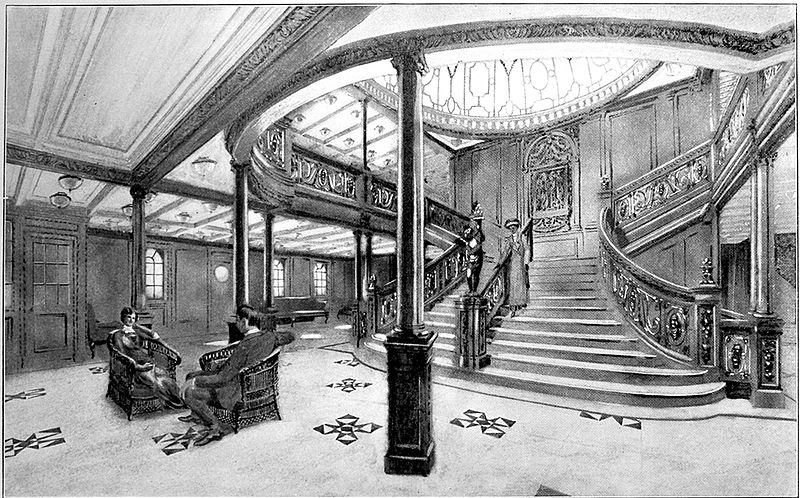Vectors
- Run code, learn more
- Duration: ~45 Minutes
- Followed by: A Break!

Learning Objectives
- What Is A Vector?
- How To Make One
- How To Delete One
- Vector Indexing (How To Subset)
- Work With Two Vectors
- Apply Functions To A Vector
What is a vector?
- Congrats, you have already worked with vectors!
- (We forgot to tell you)
- Understanding vectors is CRITICAL to becoming a useR
## This is a vector, length == 1.
captain <- "John Smith"
## This is a vector, length == 2.
captain <- c("John", "Smith")
## This is a vector too, length == 5.
age <- c(22, 38, 26, 35, 35)
## What does c stand for?
?c
Combine
- Use the function
c()to combine things - Works for numerics, characters, booleans, dates, etc.
- All arguments are coerced to a common type
- Each vector is an object
- (Everything is an object in R)
 Your Turn!
Your Turn!
## You can copy/paste this from the slide.
## These will be used again, don't delete.
age <- c(22,38,26,35,35,NA,54,2,27,14)
gender <- c("male","female","female","female","male",
"male","male","male","female","female")
## Check that you have them with this code:
length(age)
length(gender)
The answer to both length() commands should be 10
STOP!

If you didn't succeed with the last slide, SAY SOMETHING!
Visualize A Vector
A vector is like a column in Excel
| A | B | C | |
|---|---|---|---|
| 1 | age | ||
| 2 | 22 | ||
| 3 | 38 | ||
| 4 | 26 | ||
| 5 | 35 | ||
| 6 | 35 | ||
| 7 | NA | ||
| 8 | 54 | ||
| 9 | 2 | ||
| 10 | 27 | ||
| 11 | 14 |
Note: NA isn't a string, it is NA
Apply A Function
- Some functions act on each element in the vector
- Some functions act on the vector in total
## Per Item
age + 1
[1] 23 39 27 36 36 NA 55 3 28 15
## In Total
table(gender)
gender
female male
5 5
NA
- NA is the bane of our existence
na.rm = TRUEis our friend- Example:
mean()
Bad
## This will not work.
mean(age)
[1] NA
## Yeah, that's not right.
Good
## This works just fine.
mean(age, na.rm = TRUE)
[1] 28.11111
## That's more like it.
HELP!
(You might need a tugboat)
?foo- Code Completion
- RStudio help window
- Stack Overflow
- Google: Pre-pend search query with "R"
- Quick-R (Stat Methods)
- RStudio Cheatsheets

Note the lack of smoke coming from stack #4
Some Functions
Mathematical
mean(): Averagesd(): Standard Deviationvar(): Variancemin(): Smallestmax(): Biggest
Useful
length(): # of itemstable(): # distinct valuessummary(): You tell meplot(): You tell mehist(): You tell mebarplot(): You tell me
 Your Turn!
Your Turn!
## Take a few minutes and spend some
## time using a few of these functions.
## Remember ? to get help with how to use the function.
Index[1]
- AKA Subsetting / Filtering
- Let's do this together
## Use the square bracket operator to select which
## entries in a vector to return.
## Remember: There are 10 entries in age and gender.
## But maybe we only want one of them.
gender[10]
## Or maybe we only want some of them.
age[3:5]
Index[2]
STOP ME IF THIS DOESN'T MAKE SENSE!
## Perhaps we only want to return the males.
gender[gender == "male"]
## More usefully - this works across vectors.
age[gender == "male"]
Visualize 2 Vectors
In this case, these vectors are in the same order . . .
| age |
|---|
| 22 |
| 38 |
| 26 |
| 35 |
| 35 |
| NA |
| 54 |
| 2 |
| 27 |
| 14 |
| gender |
|---|
| male |
| female |
| female |
| female |
| male |
| male |
| male |
| male |
| female |
| female |
Index[3]
## Make a new variable
age_of_men <- age[gender == "male"]
## Or use it in a function
mean( age[gender=="female"] )
 Your Turn!
Your Turn!
## Using the following Boolean Object
survived <- c(FALSE,TRUE,TRUE,TRUE,FALSE,
FALSE,FALSE,FALSE,TRUE,TRUE)
## How many men survived the sinking of the Titanic?
## How many women?
Answer on the next slide!
 Your Turn!
Your Turn!
## How many men survived the sinking of the Titanic?
survived_men <- survived[gender=="male"]
table(survived_men)
## Extra credit for anyone who did it this way.
sum(survived_men)
## Try this to better understand.
survived_men == 1
Actual Passengers
| Name | Age | Gender |
|---|---|---|
| Mr. Owen Braund | 22 | male |
| Mrs. Florence Briggs Thayer | 38 | female |
| Miss. Laina Heikkinen | 26 | female |
| Mrs. Lily May Peel | 35 | female |
| Mr. William Allen | 35 | male |
| Mr. James Moran | NA | male |
| Mr. Timothy McCarthy | 54 | male |
| Master. Gosta Palsson | 2 | male |
| Mrs. Elisabeth Vilhelmina Berg | 27 | female |
| Mrs. Adele Achem | 14 | female |

Statistical Testing
-
Statistical tests are functions in R:
- Student's T-Test:
t.test() - Chi Square Test:
chisq.test()
- Student's T-Test:
- You know everything you need to know to run
Statistical Testing
t.test(age[gender=="male"], age[gender=="female"])
Welch Two Sample t-test
data: age[gender == "male"] and age[gender == "female"]
t = 0.021341, df = 3.8789, p-value = 0.984
alternative hypothesis: true difference in means is not equal to 0
95 percent confidence interval:
-32.67896 33.17896
sample estimates:
mean of x mean of y
28.25 28.00
One More Data Type
- Factor
- Superficially, similar to a string character
- More efficient with memory usage
- Defines a variable explicitly as a categorical
Make A Factor
gender
[1] "male" "female" "female" "female" "male" "male" "male" "male"
[9] "female" "female"
as.factor(gender)
[1] male female female female male male male male female female
Levels: female male
Take A Break!

Titanic in Cobh Harbour, County Cork Ireland